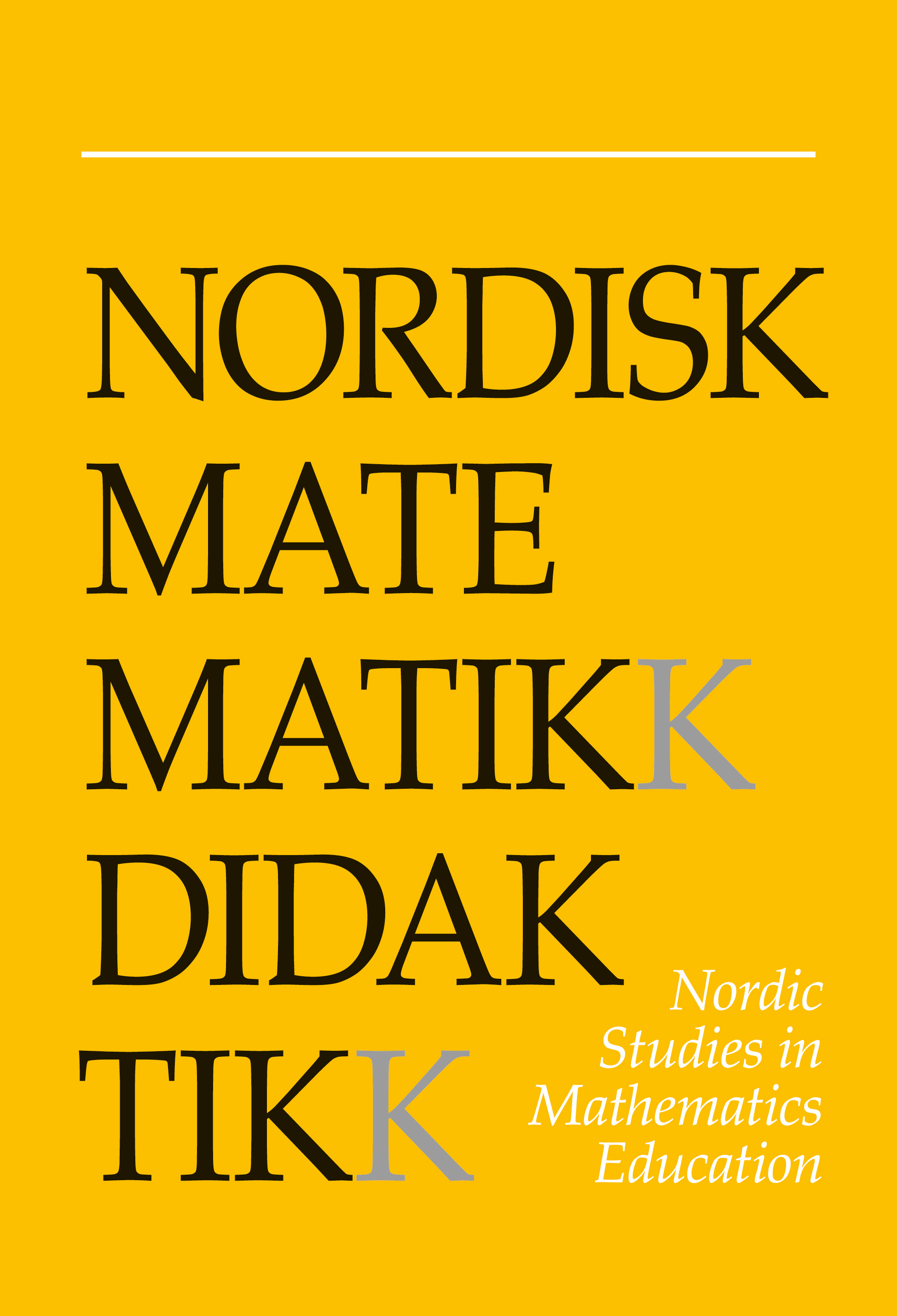Discussion activities, teacher beliefs, and the learning of mature, low attaining students
DOI:
https://doi.org/10.7146/nomad.v6i3-4.146648Abstract
This two-year investigation evaluated strategies for learning mathematics with low-attaining students in Further Education (FE) colleges in England. A substantial collection of discussion activities were developed to enhance metacognitive activity where conceptual obstacles were identified and targeted. A pre-test-post-test design was combined with detailed classroom observation. Two 'constructivist' teachers, sympathetic to metacognitive teaching approaches are compared with two' transmission' teachers who preferred exposition and practice. In the first year, without intervention, students showed modest gains with no clear difference between the two pairs of teachers. In the second year, the discussion activities contributed to statistically significant gains among the 'constructivist' teachers, but little difference was observed with the 'transmission' teachers.
References
Askew, M , Brown, M , Rhodes, V., Johnson, D. & Wiliam, D. (1997) Effective Teachers of Numeracy, Final Report. London: Kings College.
Audit Commission/ Office for Standards in Education (1993) Unfinished Business; Full time education coursesfor 16-19year olds. London: HMSO.
Baird, J. R. & Mitchell, I. J. (Eds.) (1986). Improving the Quality of Teaching and Learning; an Australian Case Study - The PEEL Project. Melbourne: Monash University.
Baird, J. R. & Northfield, J. R (1992). Learning from the PEEL Experience. Melbourne: Monash University.
Bell, A., Swan, M., Onslow, B., Pratt, K. & Purdy, D. (1985). Diagnostic Teaching for Long Term Learning. Report of ESRC Project HR8491/1. Nottingham: Shell Centre for Mathematical Education, University of Nottingham.
Bell, A. & Swan, M. (1993). Awareness of Learning, Reflection and Transfer in School Mathematics; Report of ESRC Project R000-23-2329, Nottingham: Shell Centre for Mathematical Education, University of Nottingham.
Bell, A., Phillips, R., Shannon, A. & Swan, M. (1997). Students' perceptions of the purposes of mathematical activities. In Pehkonen, E. (Ed.) Proceedings of 21st Conference of International Group for the Psychology of Mathematics Education, (pp. 2-65 - 2-72). Helsinki: University of Helsinki, Lahti Research and Training Centre.
Brekke, G. (1991). Multiplicative structures at ages seven to eleven. Study of children's conceptual development and diagnostic teaching experiments. Doctoral thesis, University of Nottingham.
Burton, L. (1992). Implications of Constructivism for Achievement in Mathematics. In J. Malone & P. Taylor (Eds.) Constructivist Interpretations of Teaching and Learning Mathematics. Perth: Curtin University of Technology.
Ernest, P. (1991). The Philosophy of Mathematics Education. London: Falmer Press.
Hart, K. M. (Ed.) (1981) Children's Understanding of Mathematic Education. London: Routledge.
Hart, K., Brown, M., Kerslake, D., Kuchemann, D. & Ruddock, G. (1985). Chelsea Diagnostic Tests. Windsor: NFER Nelson.
Johnson, D. (Ed.) (1989). Children's Mathematical Frameworks 8-13, A Study of Classroom Teaching. Winsor: NFER Nelson.
Kilpatrick, J. (1985). Reflection and Recursion. Educational Studies in Mathematics, 16(1), 1-26. https://doi.org/10.1007/BF00354880
Laborde, C (1994). Working in small groups: A learning situation? In R. Beiler et al (Eds.) Didactics of Mathematics as a Scientific Discipline, (pp. 147-157). Dordrecht: Kluwer.
Swan, M. (1983). Teaching Decimal Place Value - a comparative study of 'conflict' and 'positive only' approaches. In R. Hershkowitz (Ed.) Proceedings of Seventh International Conferencefor the Psychology of Mathematics Education, (pp. 211-216). Rehovot, Israel: The Weizmann Institute of Science.
Downloads
Published
How to Cite
Issue
Section
License

This work is licensed under a Creative Commons Attribution-NonCommercial-ShareAlike 4.0 International License.



